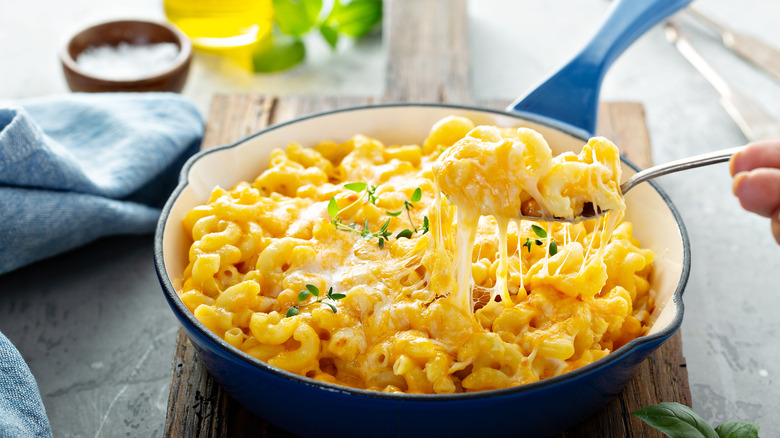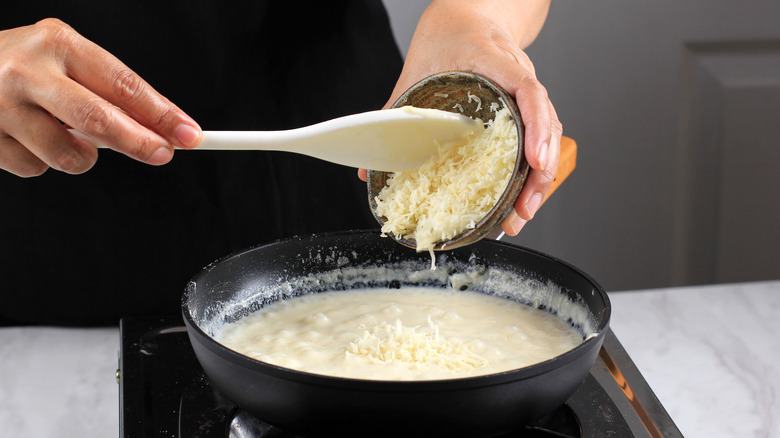The Most Important Tip To Prevent Curdled Mac And Cheese Sauce
Mac and cheese is a flexible dish. Some like it straight out of a box with powdered cheddar, while others prefer a fancier version with multiple kinds of cheese and eggs in the mix. There is no standard way to make mac and cheese, so it comes down to preference. However, everyone can agree that a mac and cheese sauce shouldn't have a grainy, curdled texture. This is a phenomenon that happens quite frequently, especially in baked mac and cheese. So how do we prevent it from happening?
Well, the science behind curdling is simple. Dairy, in particular, is prone to curdling easily due to three things: Fat, protein, and water. The Washington Post notes that these three elements resist binding together, as fat is hydrophobic and separates from water naturally. So, the way to avoid curdling is to attempt to melt the fat in the cheese while preventing the protein from solidifying, both mechanisms which occur once heat is involved. How temperamental your sauce is also depends on the kind of cheese you're using since some cheeses have more fat content. In short, there are many factors to consider. The cheese sauce can easily become an uneven mass of whey with little grainy bits of protein floating about, ruining your entire dish.
Low and slow is the key
To achieve a velvety, homogenous cheese sauce, you must slowly heat our cheese. The curdles in a cheese sauce come as a result of overheating the proteins in the cheese, which causes them to separate from the fat and water content, per The Washington Post. Protein molecules bind together and form tight, chewy grains throughout the sauce, all while leaving an excess of oil and liquid around it. The only way to avoid this is to minimize the heat exposure to your cheese. There are two ways this can be done.
Tempering is an excellent strategy used in making other smooth creams like melted chocolate or cream Anglaise. The same technique is perfect for making mac and cheese. According to Rouxbe, tempering is a method of combining two liquids (or solids) that are at completely different temperatures so that there is no shock or coagulation. This method is important for making mac and cheese because cheese begins to curdle once added to a boiling pot of milk or roux. To temper a cheese sauce, you must take your boiling milk mixture off the heat and let it cool a bit so that the proteins in the cheese don't immediately break bonds with the fat and water. Sara Moulton suggests that you grate your cheese before adding it to minimize the heat required for melting. Grated cheese melts faster due to its higher surface area and, in turn, lowers the risk of overheating the sauce.

